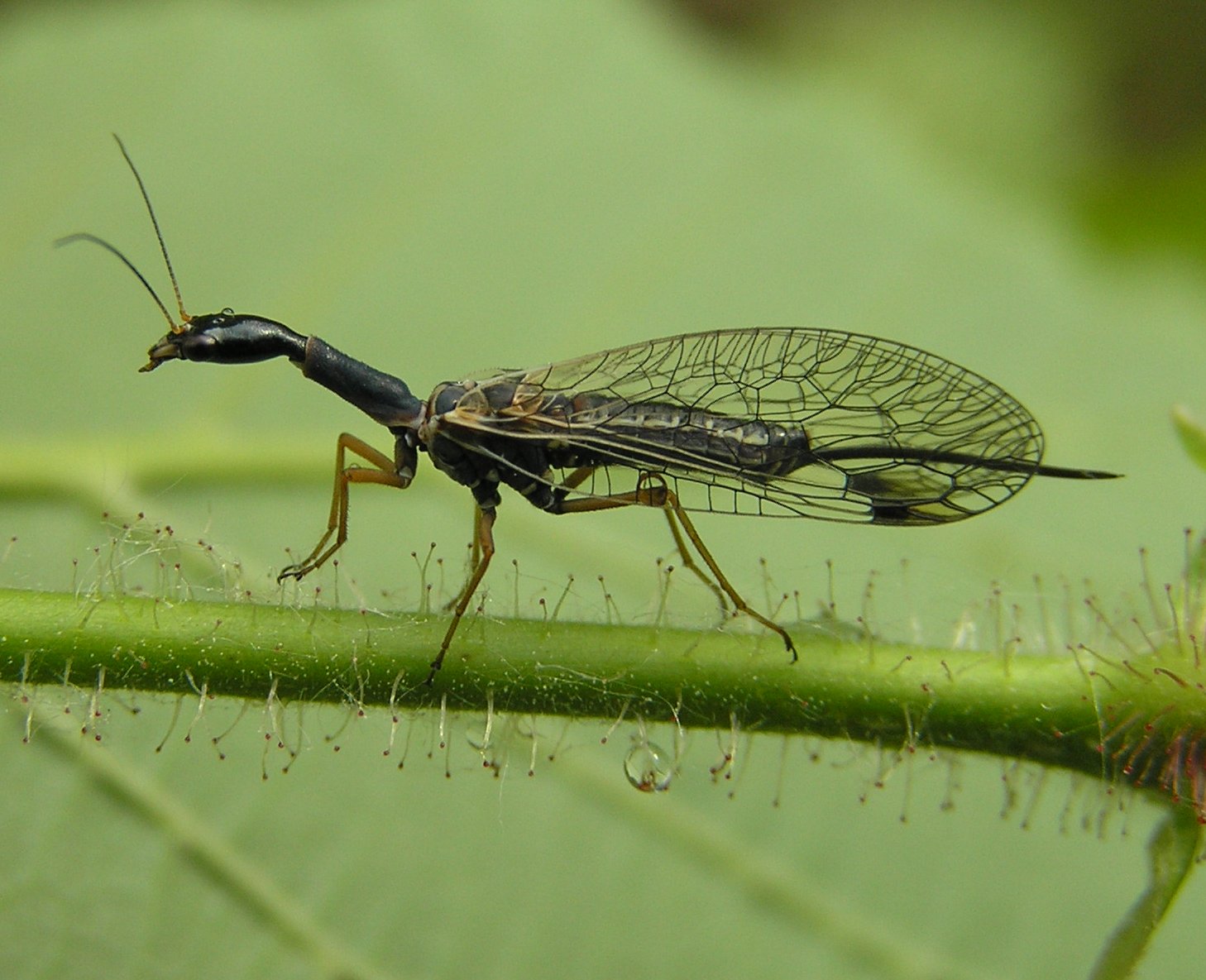(→Intro) |
|||
| Line 1: | Line 1: | ||
{{Species id | {{Species id | ||
| − | | | + | | common_name = Snakefly |
| image = Raphidia notata beentree.jpg | | image = Raphidia notata beentree.jpg | ||
| latin_name = Raphidioptera | | latin_name = Raphidioptera | ||
| order = '''Raphidioptera''' | | order = '''Raphidioptera''' | ||
| description = | | description = | ||
| − | |||
| − | |||
Raphidioptera are characterized by having an elongate prothorax but no modification of the forelegs (as in Mantispidae). Females typically have a long ovipositor. The two extant families of snakeflies are the Raphidiidae and Inocelliidae. They are all predatory, both as adults and larvae, and in North America occur exclusively in the Western United States, but also occur throughout temperate Europe and Asia. They can be quite common. | Raphidioptera are characterized by having an elongate prothorax but no modification of the forelegs (as in Mantispidae). Females typically have a long ovipositor. The two extant families of snakeflies are the Raphidiidae and Inocelliidae. They are all predatory, both as adults and larvae, and in North America occur exclusively in the Western United States, but also occur throughout temperate Europe and Asia. They can be quite common. | ||
}} | }} | ||
Revision as of 00:42, 12 March 2008
Snakefly (Raphidioptera)
Order: Raphidioptera
Description: Raphidioptera are characterized by having an elongate prothorax but no modification of the forelegs (as in Mantispidae). Females typically have a long ovipositor. The two extant families of snakeflies are the Raphidiidae and Inocelliidae. They are all predatory, both as adults and larvae, and in North America occur exclusively in the Western United States, but also occur throughout temperate Europe and Asia. They can be quite common.

